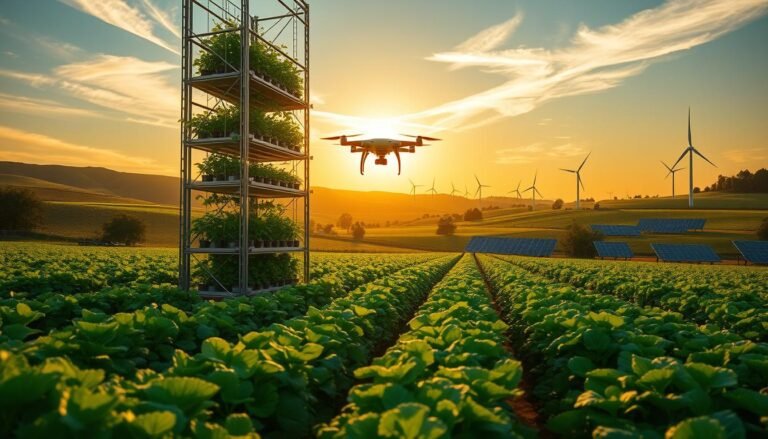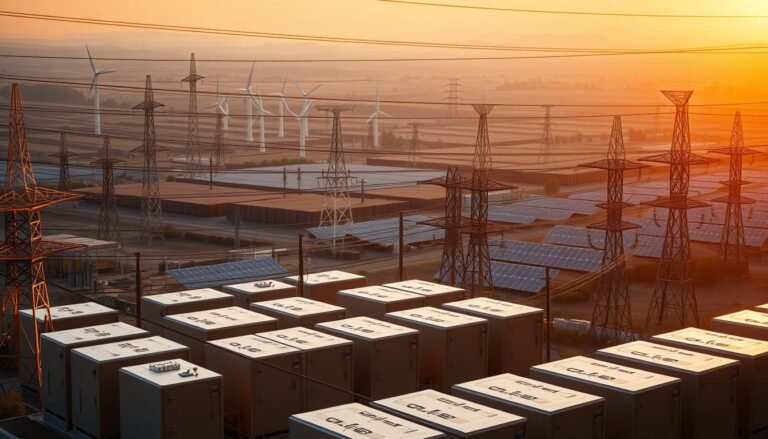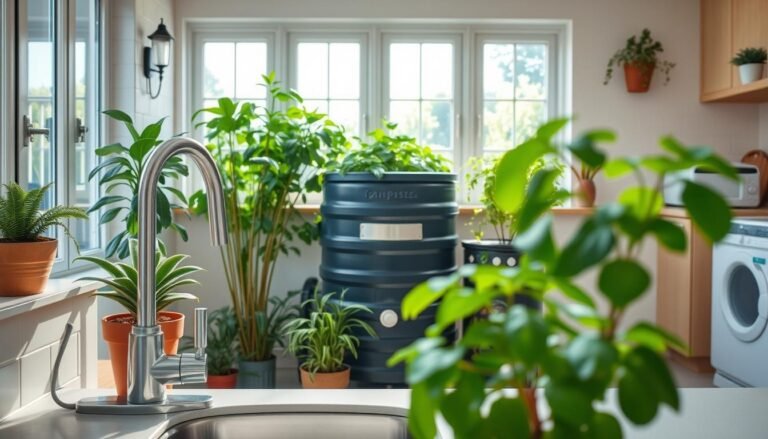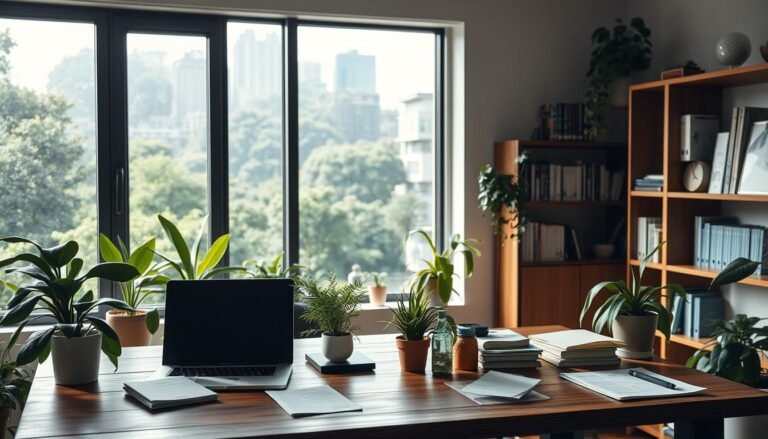Australia’s oceans are facing a significant threat from microplastics, with millions of tonnes of plastic waste entering our waterways each year. The impact on marine life is devastating, with many species becoming entangled or ingesting plastic debris.
Adopting eco-friendly habits is crucial in the fight against microplastics. By making simple changes to our daily routines, we can significantly reduce microplastics in our environment.
This article will explore practical tips on reducing microplastic use, helping you contribute to a cleaner ocean.
Key Takeaways
- Simple changes to daily habits can significantly reduce microplastic use.
- Eco-friendly alternatives to common products can help minimise plastic waste.
- Adopting sustainable practices can contribute to a cleaner ocean.
- Reducing microplastic use is crucial for protecting marine life.
- Small actions collectively make a significant difference.
The Hidden Threat of Microplastics in Our Oceans
Our oceans are facing an unprecedented threat from microplastics, tiny plastic particles that are often overlooked. Microplastics come from various sources, including the breakdown of larger plastic debris, microbeads in personal care products, and synthetic fibers from clothing.
What Are Microplastics and Where Do They Come From?
Microplastics are defined as plastic particles less than 5mm in size. They can be found in a variety of products, from cosmetics to clothing. The main sources include:
- Microbeads in face wash and toothpaste
- Synthetic fibers from clothing
- Breakdown of larger plastic items
These tiny particles are not only harmful to marine life but also contaminate the food chain, potentially affecting human health.
The Environmental Impact on Australian Marine Life
Australian marine life is particularly vulnerable to the effects of microplastics. Sea turtles, fish, and seabirds often mistake microplastics for food, leading to blockages, nutrient deficiencies, and even death.
The impact on marine life can be seen in several ways:
- Ingestion of microplastics
- Entanglement in plastic debris
- Habitat destruction
By understanding the sources and impacts of microplastics, Australians can adopt eco-friendly habits to reduce their plastic footprint and help protect marine life.
Understanding Your Personal Microplastic Footprint
As Australians, we can make a difference by understanding and reducing our microplastic footprint. To start, it’s essential to identify the common sources of microplastics in our daily lives.
Common Sources of Microplastics in Australian Households
Microplastics can be found in various household items, including plastic packaging, synthetic fabrics, and personal care products. For instance, many cosmetics contain microbeads that can harm marine life when washed down the drain.
- Plastic packaging from food and beverages
- Synthetic fabrics from clothing
- Microbeads in personal care products
Conducting a Home Plastic Audit
Conducting a home plastic audit is a straightforward way to understand your microplastic footprint. Start by examining your household items, such as cleaning products, personal care products, and clothing.
| Household Item | Microplastic Content | Alternative |
|---|---|---|
| Face wash | Microbeads | Exfoliating scrub with natural ingredients |
| Synthetic clothing | Microfibres | Clothing made from natural fabrics |
| Plastic packaging | Microplastics | Reusable bags and containers |
By understanding your personal microplastic footprint and making a few simple changes, you can significantly reduce your contribution to microplastic pollution.
How to Reduce Microplastic Use Daily: A Comprehensive Approach
To effectively minimize microplastic use, it’s essential to adopt a comprehensive strategy that encompasses daily habits and long-term goals. This approach not only helps in reducing plastic waste but also fosters sustainable living practices.
Setting Realistic Goals for Microplastic Reduction
Setting achievable goals is the first step towards reducing microplastic use. Start by identifying areas in your daily routine where plastic use can be minimized, such as using reusable bags and water bottles.
Conducting a home plastic audit can help you understand your current plastic usage patterns. This will enable you to set specific, measurable goals, such as reducing your plastic waste by a certain percentage within a few months.
| Area of Improvement | Current Plastic Use | Reduction Goal |
|---|---|---|
| Single-use bags | 5 per week | 0 per week |
| Plastic water bottles | 3 per day | 0 per day |
Creating a Sustainable Transition Plan
Creating a transition plan involves replacing plastic products with sustainable alternatives. For instance, switching to cloth bags, stainless steel water bottles, and glass containers can significantly reduce plastic waste.
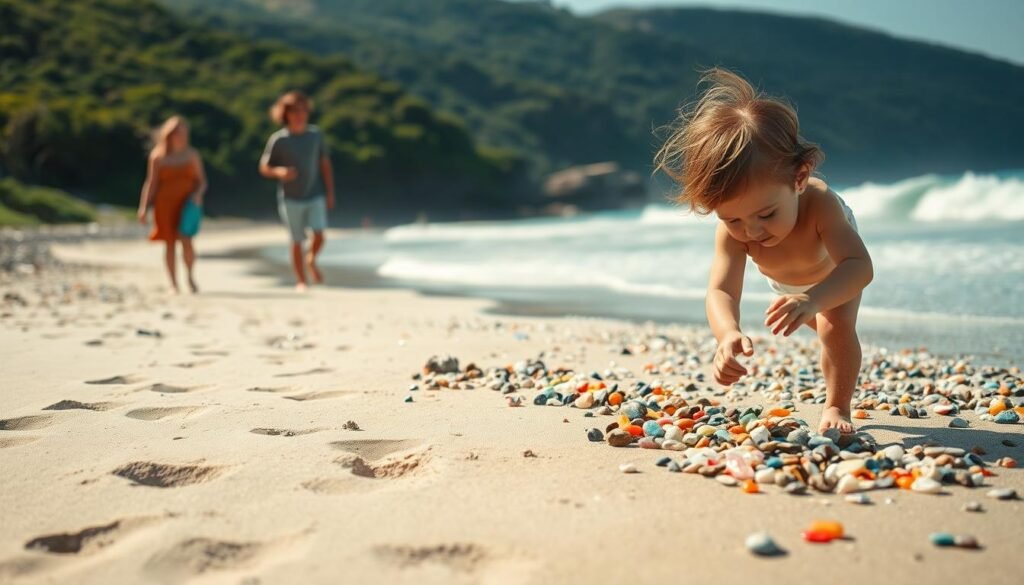
It’s also important to phase out plastic use gradually. Start with the most frequently used plastic items and gradually move towards less common ones. This will make the transition smoother and more manageable.
By setting realistic goals and creating a sustainable transition plan, you can significantly reduce your microplastic footprint and contribute to a cleaner environment.
Bathroom Swaps to Eliminate Microplastics
Transforming your bathroom routine is a crucial step in reducing microplastic pollution in our oceans. Many personal care products contain microplastics that eventually make their way into waterways, harming marine life. By making a few simple changes, you can significantly reduce your microplastic footprint.
Microplastic-Free Personal Care Products Available in Australia
Australia offers a range of microplastic-free personal care products. Many Australian brands are now opting for natural ingredients and biodegradable materials. Some popular options include:
- Toothpaste tablets without microbeads
- Natural exfoliating scrubs with ingredients like apricot kernels or sugar
- Shower gels and face washes that use natural exfoliants
When shopping, look for products labeled as “microplastic-free” or “biodegradable” to ensure you’re making the right choice.
DIY Alternatives for Common Toiletries
Creating your own bathroom products is a fun and effective way to eliminate microplastics. Here are some DIY alternatives:
Natural Exfoliants Instead of Microbeads
Replace microbeads with natural exfoliants like ground coffee, oatmeal, or salt. These ingredients are gentle on the skin and the environment.
Plastic-Free Dental Care Options
Switch to bamboo toothbrushes and toothpaste in glass jars or tubes made from recyclable materials. Some Australians are also making their own toothpaste using coconut oil and baking soda.
By adopting these eco-friendly habits and choosing microplastic-free products, you can make a significant impact on reducing microplastic pollution in our oceans.
Kitchen Habits That Reduce Microplastic Contamination
Simple changes in your daily kitchen routines can significantly minimize microplastic exposure. By adopting a few eco-friendly practices, you can contribute to a healthier environment and reduce your plastic footprint.
Food Storage Solutions Without Plastic
One of the primary sources of microplastic contamination in the kitchen is plastic storage containers. Switching to alternative materials can make a significant difference.
Australian-Made Glass and Stainless Steel Containers
Glass and stainless steel containers are excellent alternatives to plastic. They are durable, non-toxic, and can be used for both storing and reheating food. Brands like Pyrex and Stainless Steel by Kingston offer high-quality options.
Beeswax Wraps and Silicone Alternatives
Beeswax wraps are a sustainable replacement for plastic wrap. They are reusable and can be used to cover bowls or wrap snacks. Silicone alternatives, such as silicone lids and bags, are also durable and easy to clean. As noted by environmental expert,
“Using beeswax wraps and silicone products can significantly reduce household plastic waste.”
Cooking Methods That Avoid Plastic Exposure
Cooking methods can also contribute to microplastic contamination, particularly when using non-stick cookware. Opting for cast iron or stainless steel pots and pans can help minimize this risk.
Cooking at home allows you to control what goes into your food, reducing the risk of microplastic contamination. As “a study found, cooking from scratch using fresh ingredients can significantly lower exposure to microplastics.”
To further reduce microplastic exposure, consider the following cooking tips:
- Avoid heating food in plastic containers.
- Use glass or ceramic dishes for baking.
- Choose stainless steel or cast iron cookware.
Sustainable Clothing Choices to Prevent Microfibre Shedding
Sustainable clothing choices play a crucial role in reducing microfibre shedding and promoting a cleaner ocean. The clothes we wear have a significant impact on the environment, and making informed choices can help mitigate this issue.
Natural Fabrics That Don’t Release Microfibres
Choosing clothing made from natural fabrics is an effective way to reduce microfibre shedding. Fabrics such as cotton, linen, and silk are biodegradable and tend to release fewer microfibres compared to synthetic materials. When shopping for clothes, opting for natural fibres can significantly reduce your environmental footprint.

Laundry Techniques to Minimise Microplastic Release
Simple changes in laundry practices can also help minimize microplastic release. Techniques such as washing clothes in cold water and using a gentle cycle can reduce microfibre shedding. Additionally, not over-drying clothes can also help reduce the amount of microfibres released.
Microfibre Catching Devices for Your Washing Machine
Using microfibre catching devices in your washing machine is an innovative solution to reduce microplastic release. These devices capture microfibres before they enter the water system, significantly reducing the amount of microplastics released into the environment.
Cold Water Washing Benefits
Washing clothes in cold water not only reduces energy consumption but also helps in minimizing microfibre shedding. Cold water washing is a simple yet effective technique to adopt for a more sustainable laundry practice.
By adopting these sustainable clothing choices and laundry techniques, individuals can significantly contribute to reducing microplastic pollution in our oceans.
Smart Shopping Strategies for Plastic-Free Living
As consumers, we have the power to drive change by adopting smart shopping strategies. By making a few simple changes to our shopping habits, we can significantly reduce our plastic footprint and contribute to a cleaner environment.
Navigating Australian Supermarkets Sustainably
Navigating supermarkets sustainably is a crucial step towards reducing plastic use. One effective way to do this is by shopping in bulk. Many Australian cities now have bulk food stores where consumers can purchase goods without the excess packaging.
Bulk Food Stores Across Major Australian Cities
Bulk food stores are becoming increasingly popular across major Australian cities. Cities like Sydney, Melbourne, and Brisbane have numerous stores offering a wide range of products, from grains and nuts to cleaning supplies, all available in bulk.
- Sydney: Stores like Bulk Nutrients and The Source Bulk Foods offer a variety of bulk products.
- Melbourne: Melbourne Bulk Foods and The Bulk Store are popular choices.
- Brisbane: Brisbane has stores like Bulk Food Store and Eco Friendly Bulk Foods.
Reading Packaging Labels for Hidden Plastics
It’s also essential to read packaging labels carefully to identify hidden plastics. Look for terms like ‘biodegradable’ or ‘compostable’ and check for certifications like the Australasian Recycling Label (ARL).
| Label Claim | What to Look For |
|---|---|
| Biodegradable | Certification from reputable bodies, conditions for biodegradability |
| Compostable | Compostable logo, conditions for composting |
| Recyclable | ARL certification, recyclable materials |
Building a Zero-Waste Shopping Kit
Building a zero-waste shopping kit is a practical step towards plastic-free living. This kit should include reusable bags, produce bags, and containers for bulk shopping.
For more tips on reducing microplastic pollution, visit Perch Energy’s blog on the subject.
Reducing Microplastics in Your Drinking Water
Australians can take action to minimize microplastic contamination in their drinking water. One effective way to achieve this is by implementing proper water filtration systems and adopting sustainable practices.
Water Filtration Options for Australian Homes
Investing in a reliable water filtration system can significantly reduce microplastic exposure. Popular options include:
- Activated carbon filters
- Reverse osmosis systems
- Ultrafiltration systems
When choosing a filtration system, consider factors such as filter lifespan, maintenance requirements, and certification standards.
| Filtration Type | Effectiveness Against Microplastics | Maintenance Needs |
|---|---|---|
| Activated Carbon | Moderate | Regular filter replacement |
| Reverse Osmosis | High | Periodic membrane replacement |
| Ultrafiltration | High | Regular filter cleaning |
Sustainable Alternatives to Bottled Water
Reducing reliance on bottled water is another crucial step. Australians can switch to:
- Reusable water bottles made from stainless steel or glass
- Filtered tap water
By making these changes, individuals can significantly reduce their plastic waste and lower their exposure to microplastics.
Eco-Friendly Cleaning Products and Methods
Adopting eco-friendly cleaning products and methods is a crucial step towards reducing microplastic pollution in Australian homes. By making a few simple changes to your cleaning routine, you can significantly minimize your household’s environmental impact.
Natural Cleaning Alternatives Using Australian Ingredients
Australia is renowned for its unique flora, and many native ingredients can be used to create effective, eco-friendly cleaning products. For instance, the antibacterial properties of Manuka honey and Tea Tree oil make them excellent alternatives to chemical-laden cleaning agents.
- Manuka Honey: Known for its antibacterial properties, Manuka honey can be used in homemade cleaning solutions.
- Tea Tree Oil: This essential oil is a potent antimicrobial agent that can be added to cleaning products for enhanced effectiveness.
- Baking Soda: A natural abrasive, baking soda is perfect for scrubbing surfaces without causing damage.
| Ingredient | Use | Benefits |
|---|---|---|
| Manuka Honey | Homemade cleaning solutions | Antibacterial properties |
| Tea Tree Oil | Antimicrobial agent | Effective against a wide range of microbes |
| Baking Soda | Scrubbing surfaces | Natural abrasive, non-toxic |
Microplastic-Free Cleaning Tools and Equipment
Switching to microplastic-free cleaning tools is another effective way to reduce your household’s microplastic footprint. Many conventional cleaning tools, such as synthetic scrubbers and microfiber cloths, can shed microplastics during use.
Opt for cleaning tools made from natural materials or those specifically designed to be microplastic-free. For example:
- Natural Fibre Cloths: Cloths made from natural fibres like cotton or linen are excellent alternatives to synthetic microfiber cloths.
- Scrubbers Made from Natural Materials: Scrubbers crafted from natural materials such as coconut husk or bamboo are effective and biodegradable.
By incorporating these eco-friendly cleaning products and methods into your daily routine, you can contribute to a significant reduction in microplastic pollution.
Tackling Microplastics in Australian Coastal Communities
In the battle against microplastic pollution, Australian coastal communities are proving to be crucial players. These communities are not just affected by microplastic pollution; they are also at the forefront of addressing this issue.
Beach Clean-Up Initiatives Across Australia
Beach clean-up initiatives are a vital part of the effort to reduce microplastic pollution in Australian coastal communities. Organizations and local groups across the country organize regular clean-up events, engaging community members in the process. For example:
- The Tangaroa Blue Foundation’s Australian Marine Debris Initiative
- Clean Up Australia’s annual Beach Clean-Up events
- Local council-led clean-up initiatives in various coastal towns
These initiatives not only remove microplastics and other debris from beaches but also raise awareness about the issue.
Community Education and Awareness Programs
Community education and awareness programs are essential in tackling microplastic pollution. These programs educate the public about the sources and impacts of microplastics, promoting behavioral change. Some notable programs include:
- Workshops on sustainable living and reducing plastic use
- School programs that incorporate environmental education
- Public events and exhibitions highlighting the issue of microplastics
By empowering communities with knowledge, these programs play a crucial role in the broader effort to reduce microplastic pollution.
Technology and Innovation in Microplastic Reduction
Innovative technologies are playing a crucial role in reducing microplastic use daily. As concern for the environment grows, Australians are turning to technology to help mitigate the issue of microplastic pollution.
Apps and Tools to Help Track and Reduce Plastic Use
Several apps and tools are being developed to help individuals track and reduce their plastic use. For instance, apps like Trash Tracker and Zero Waste allow users to log their plastic usage and receive personalized recommendations for reduction. These digital tools are making it easier for Australians to make sustainable choices in their daily lives.
Australian Research and Emerging Solutions
Australian research institutions are at the forefront of developing emerging solutions to microplastic pollution. For example, the University of Sydney is conducting research into biodegradable alternatives to traditional plastics. Additionally, companies are developing innovative materials and products designed to reduce microplastic release into the environment.
These advancements in technology and research are crucial steps towards a more sustainable future, enabling Australians to reduce their microplastic footprint effectively.
Teaching Children About Microplastic Pollution
Educating children about microplastic pollution is a crucial step in fostering a sustainable future. By instilling environmentally conscious habits from a young age, we can empower the next generation to make a positive impact on the environment.
Age-Appropriate Activities for Environmental Education
Engaging children in age-appropriate activities is an effective way to introduce them to the concept of microplastic pollution. For younger children, simple tasks like sorting recyclables or creating art from recycled materials can be both fun and educational. Older children can participate in more complex activities, such as conducting beach cleanups or researching the impact of microplastics on local wildlife.
- Sorting recyclables
- Creating art from recycled materials
- Conducting beach cleanups
- Researching local wildlife impact
School Programs and Resources in Australia
Australia offers various school programs and resources to support environmental education. Organizations such as the Australian Marine Conservation Society provide educational materials and activities focused on marine conservation and the impact of microplastics. Schools can also incorporate environmental education into their curriculum through programs like the Environment in the Classroom initiative.
| Program | Description | Provider |
|---|---|---|
| Marine Conservation Education | Educational materials on marine conservation | Australian Marine Conservation Society |
| Environment in the Classroom | Environmental education for schools | Various Providers |
Advocating for Policy Changes in Australia
Australia’s battle against microplastic pollution requires not just individual action, but also significant policy changes. While personal choices play a crucial role in reducing microplastic use, broader legislative measures are necessary to drive substantial change across the nation.
Current Australian Legislation on Microplastics
Australia has taken steps to address plastic pollution, including the implementation of the National Waste Policy and various state-level initiatives. However, the current legislation has limitations in tackling microplastics specifically. For instance, while some states have banned single-use plastics, more comprehensive regulations are needed to address microplastic sources.
| Legislation | Focus | Impact on Microplastics |
|---|---|---|
| National Waste Policy | Reducing waste and improving recycling | Limited direct impact on microplastics |
| State-level bans on single-use plastics | Reducing single-use plastics | Some reduction in microplastic sources |
How to Support Stronger Environmental Regulations
Citizens can play a vital role in advocating for stronger environmental regulations. This can be achieved by contacting local representatives, participating in community consultations, and supporting organizations that campaign for environmental protection. By making their voices heard, Australians can push for more effective policies to combat microplastic pollution.
By understanding the current legislative landscape and actively supporting stronger regulations, Australians can contribute to a more comprehensive approach to reducing microplastic pollution.
Measuring the Impact of Your Microplastic Reduction Efforts
Measuring the impact of your microplastic reduction efforts is a crucial step towards a more sustainable lifestyle. By understanding the effects of your daily choices, you can make informed decisions to further reduce your microplastic footprint.
Short-Term vs. Long-Term Environmental Benefits
Reducing microplastic use has both immediate and long-term benefits. In the short term, you’ll notice a decrease in the amount of plastic waste in your home. Over time, this contributes to a significant reduction in ocean pollution and protects marine life. Some key benefits include:
- Reduced plastic waste in landfills and oceans
- Less microplastic ingestion by marine animals
- A decrease in the amount of microplastics in the food chain
Celebrating Small Victories in Sustainability
Celebrating your achievements, no matter how small, is vital to maintaining a sustainable lifestyle. Acknowledging your progress helps to reinforce positive habits and motivates you to continue making environmentally friendly choices. Consider tracking your progress and setting new goals to stay on track.
Conclusion: Your Role in Creating Plastic-Free Oceans
As we’ve explored throughout this article, reducing microplastic use daily is a crucial step towards achieving plastic-free oceans and promoting sustainability. By implementing the smart habits outlined, individuals can significantly minimize their microplastic footprint.
From bathroom swaps to sustainable clothing choices, every action counts. By making conscious decisions in our daily lives, we can collectively drive meaningful change. The journey to plastic-free oceans begins with individual actions, and by working together, we can create a more sustainable future for Australian marine life.
By adopting these habits and inspiring others to do the same, we can reduce microplastic pollution and protect our oceans. Every small change contributes to a larger impact, and together, we can make a difference in the health of our planet.


